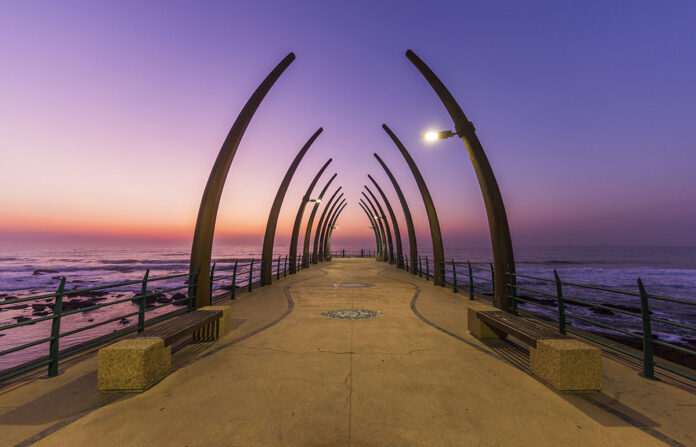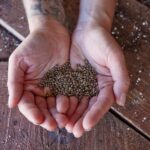Africa’s population is the fastest growing in the world. In 2019, the continent’s total population was estimated at 1.3 billion. With fifty-four countries, or ten more countries than in all of Europe, Africa comprises a large market with exponential post-legalization potential. And, historically, cannabis has strong genetic ties to the continent.
I’m an absolute canna-geek when it comes to landrace strains, several of which hail from Africa—specifically “the Rainbow Nation,” South Africa. By far the most well-known cultivar is Durban Poison, with ties to—you guessed it—Durban, South Africa. The sweet and fruity strain is pure sativa and a fun grow in most climates. Swazi Gold is another popular cultivar, known for its resilience and a flowering cycle of up to eighty-five days. Other strains from the region include Sinai, Melawi, Kilimanjaro, Ethiopian, and KwaZulu. Many of these date back to the fourteenth century and often are tied to specific historical tribes and communities.
Similar to strains in the United States, many of these cultivars have disappeared from African cannabis cultivation over the years. Thankfully, friend and Humboldt Seed Company Chief Science Officer Ben Lind has been working to preserve the unique characteristics of these ancient landrace strains and secure genetics specific to the bioregion. Currently, he is collaborating with Arbour Collective in South Africa to hybridize the Transkei strain to create a stable varietal suitable for farmers in the region. Such transnational cooperation is a must to keep regional genetics alive and well post-prohibition.
Legalization and African cannabis
According to the United Nations Office on Drugs and Crime, nineteen of Africa’s fifty-four countries reported the production of cannabis within their jurisdictions between 2005 and 2015. In 2005, the same organization estimated 42,000 metric tons of cannabis were produced globally—more than 10,000 of which were cultivated in Africa. In other words, approximately 25 percent of all cannabis grown globally was attributed to one often-overlooked continent.
The latest legalization news is from Morocco, which has earned an impressive reputation for growing illicit weed. The government legalized cultivation, with the stipulation crops be exported to Europe. In February, Malawi legalized both cultivation and processing. In addition, several other nations have relaxed laws or legalized growing, sales, and/or consumption: the Democratic Republic of the Congo, Ghana, Kenya and Lesotho, Uganda, Zimbabwe, and Zambia.
Beyond notable landrace strains and perfect growing climates, what makes South Africa stand out among the other fifty-three countries on the continent? First, prohibition was lifted by parliament in 2018. I distinctly remember friend and fellow advocate Michael Roslee, who is based in Johannesburg, calling me via WhatsApp so I could watch the historic moment unfold in parliament. This was a major win, as prohibition came about way back in 1922, a full fifteen years prior to the first regulations established in the U.S. Unlike the U.S., even during prohibition South Africa allowed cannabis, or dagga as it is commonly known, for medical use and religious practices, among other exemptions.
Past, present, future
More recently we saw the introduction of the Cannabis for Private Purposes Bill in 2020. The bill outlines proposed limits on the personal cultivation, possession, sharing, and use of cannabis by adults strictly in private. The legislation makes provisions for publicly possessing as well as gifting cannabis plants, seeds, and dried flower. It establishes quantities that would be considered “trafficable” and outlines commercial offenses that could lead to fines and imprisonment for up to fifteen years. Parliament has yet to approve the bill but is expected to do so in 2022 or 2023. Until the legislation is signed into law, cannabis’s status will remain slightly contradictory, so know the law before you plan your cannabis-specific travel to the Cape.
Combining the above with South Africa’s historical trade routes, financial epicenter, and international presence makes the future look bright for dagga in the Rainbow Nation. This is rounded off nicely by an ideal climate and longstanding cultural ties to the plant. Many in the industry there are working closely across borders with other advocates. Combined with neighboring countries like Zimbabwe and Mozambique, there’s plenty of green gold ready for exportation.












